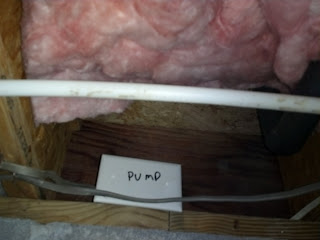Our current refrigerator is a GE Profile 24.7 ft^3, model number TBX25PAB that was manufactured in March of 2001. As part of our Half Project, I was interested is seeing how our refrigerator (which is not Energy Star rated) compared to a newer model refrigerator and to see if it made sense to upgrade.
The power consumption of the current refrigerator was measured with a Kill-A-Watt meter over the course of several weeks at 2.4 kWh/day, or 876 kWh/year. For our area, Dominion Power charges us approximately $0.11/kWh, so our cost to run the refrigerator is $96/year which is about 3% of our yearly energy consumption.
The Energy Star website has a refrigerator/freezer calculator that you can use to calculate the operating costs of your current appliance. I used this to compare the actual usage data that I collected with the estimated usage from Energy Star. The chart below shows that the estimated usage is slightly higher than my actual usage, but it is within 10% which is acceptable for an estimate.
| Model | Data | kWh | $/kWh | Per year cost |
| GE TBX25 | Actual | 876 | 0.11 | $96 |
| GE TBX25 | Estimated | 961 | 0.11 | $106 |
GE makes a newer version of the Profile series which is a direct replacement for what I currently have. It is a little pricey at $1800 but let’s look at its performance. First of all I’ll ignore the fact that the Sears website has conflicting data with the Energy Star label over yearly kWh usage and I’ll just use the data from the Energy Star label.
| Model | Data | kWh | $/kWh | Per year cost |
| GE PTS25 | Estimated | 560 | 0.11 | $61 |
Using the Energy Star estimates for both the old and new refrigerator I can expect to get the following savings.
| Energy Saving/year | 401 kWh |
| $’s Saved/year | $44.11 |
| Initial Cost | $1800 |
| 1st year Return | < 2.5% |
| CO2 Reduction | 441 lbs |
With a payback period of ~40 years, upgrading to the newer model GE Profile just doesn’t make sense right now. It’s time to research other models of refrigerators.




































